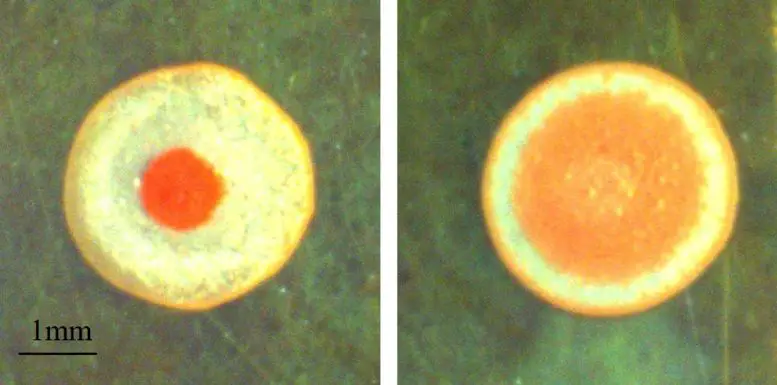When it comes to the drying process of substances like coffee or paint, curious patterns often emerge. For instance, a coffee spill can leave behind a dark stain surrounding its edges as it dries, while drying drops of paint may exhibit diverse appearances, ranging from “fried eggs” with colorful “yolks” encircled by pristine white halos to more uniform patterns. To decipher the enigma behind these variations, a team of researchers, as reported in ACS’ Langmuir, took an unconventional approach and quite literally watched paint dry. Their findings shed light on the impact of pigment concentration and temperature on the gelation and evaporation of the liquid, providing valuable insights that could aid in controlling the patterns formed during paint drying.
Paint is a complex concoction comprising various components, including resins, pigments, additives, and a solvent, typically water. Given its intricate composition, a multitude of chemical interactions occur during the drying of paint drops, occasionally leading to undesired patterns or small cracks. Artists and home painters generally seek an even and uniform distribution of pigments on the painted surface. However, preventing the formation of patterns during the drying process has proven to be a challenging task. In pursuit of answers, Stella Ramos, Catherine Barentin, and their colleagues embarked on a study to explore the factors influencing the evaporation of water-based paint.

The researchers prepared five different mixtures of a water-based acrylic paint and water and then deposited these solutions onto heated glass slides. As the liquid gradually evaporated, they meticulously examined and photographed the resulting deposits, uncovering three distinct phenomena:
- Initially, a dynamic interplay between inward and outward flows within the liquid emerged, with the heated substrate driving an inward flow and capillary forces exerting an outward pull.
- Subsequently, the gelation of the paint suspension increased the viscosity, slowing the movement of pigments.
- In the final stages of drying, the pigments were locked in place on the slide’s surface.
Notably, both the pigment concentration and the temperature of the glass surface played pivotal roles in determining the size, shape, and pattern of the dried paint drops. The researchers observed that drops with lower pigment concentrations or those deposited on cooler surfaces around 86 degrees Fahrenheit tended to accumulate colorful molecules in the center, creating the “fried egg” appearance. Conversely, when there was a higher pigment content and higher surface temperatures of up to 176 degrees Fahrenheit, the resulting dried pattern was more uniform, boasting an even distribution of colors throughout the entire circle.
In essence, the research team concludes that by adjusting pigment concentration and surface temperature, one can exercise precise control over the appearance of dried paint, tailoring it to achieve the desired final pattern.
Source: scitechdaily.com


